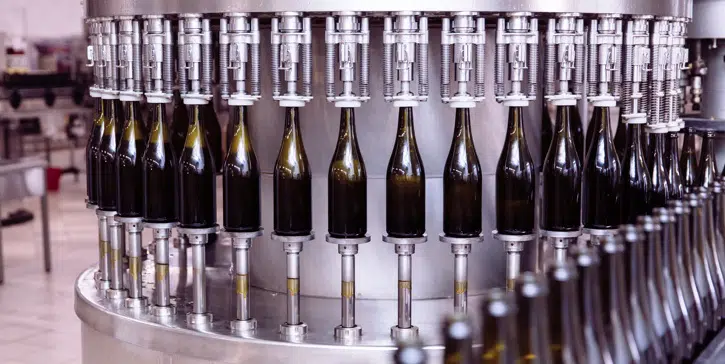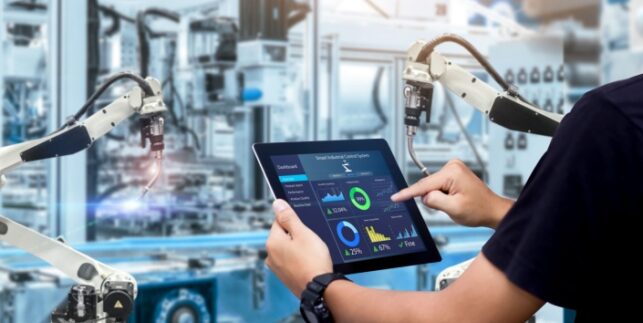The Importance of Real-Time Manufacturing Analytics in Achieving OEE

Industrial Internet of Things (IIoT), cloud, and AI are all transforming manufacturing for the better. Sensor technologies and the Internet of Things make it possible to track machine performance 24/7, allowing staff to respond to potential problems in real time, avoiding costly delays. For example, the Information Technology Intelligence Consulting reports that 60 minutes of downtime typically costs a company $100,000 or more. Therefore, maintaining optimum performance is a top priority for manufacturers.
While the occasional equipment breakdown, poor quality production run, or materials shortage are all expected parts of the real-time manufacturing process, these incidents can be significantly reduced with the right tools – namely, real-time production OEE software. Real-time production data is the key to establishing smoother operations and minimizing the impact of unanticipated production setbacks.
An OEE of 100% means the operation is running as smoothly as possible, with no interruptions or stop time. The level of even 85% production efficiency is nearly impossible to achieve without real-time manufacturing analytics software. The system collects, visualizes, processes, and analyzes data across the factory floor, making it central for operations. Real-time production data and call-to-action alerts help improve operational efficiency and cost-effectiveness.
Benefits of Real-Time Manufacturing Analytics
A single source of information
Siloed departments and personnel, whether in a single facility or across multiple operations, can slow down real-time communication among employees, which in turn slows down manufacturing productivity and decision-making.
A real-time manufacturing analytics system connects all departments and stakeholders involved in production processes. The system standardizes methodology, terminology, and reporting procedures across all factory sites. Such interactive data analysis supports a data-driven decision-making culture that enables employees to make fast, effective operational and business decisions.
Reports and dashboards
For instant business decision-making, real-time production efficiency software provides a variety of reports and dashboards that can be customized to meet the needs of individual users—for example, maintenance, quality, or production. Performance updates and comparative analysis charts are automatically available to the other team members. These notifications and insights help managers identify problems earlier and address them faster than traditional post-mortem processes.
Real-time smart alerts
Smart alerts are automatically sent to staff as soon as performance variations are detected, or KPIs shift from pre-set limits. Operators and managers can then instantly respond to bring the process back into balance, avoiding costly downtime or product quality/rework issues before they become serious, hugely expensive problems.
Improved transparency
Transparent flow of information to all stakeholders increases the visibility of all operations. Task management is simplified when all team members understand production data in real time. Real-time shop floor analytics also helps transfer information when personnel shifts occur, making it easier to bring incoming floor personnel up to speed quickly on status, special concerns, etc. There’s also enhanced transparency to customers for J-I-T deliveries when the system immediately communicates business needs and production process status.
Higher production efficiency, less waste
A real-time production efficiency software is essential for improving floor operations and increasing OEE. For example, it can identify and eliminate reasons for slowdowns or schedule predictive maintenance. A modern manufacturing analytics software also monitors energy efficiency and compares energy consumption per product or machine, as well as providing notifications of energy deviations. Real-time labor reporting and accurate job time can also be captured, both essential for determining accurate cost information.
Capabilities to identify and resolve the root cause of losses
With real-time information flow, when OEE losses occur, production data can be quickly analyzed to identify the source of the problem—for example, failed equipment, reduced speed, idling time, tooling delays, etc. The system can be programmed to track KPIs and related actions, reports, notes, and alerts to perform root cause analysis.
Secure data transfer
As the use of cloud-based real-time manufacturing analytics grows, so do concerns about data security and transfer speed. Cloud solutions provide a secure, independent and stable wireless network that operates separately from the factory. Manufacturing data is encrypted for transfer from the shop floor to the router to the cloud using our proprietary technology.

Changing the way people work in factories
Request a DemoAchieving Maximum OEE
Real-time OEE-measuring solutions can be implemented in a single manufacturing plant or as an enterprise-level program at multiple locations around the world. OEE is the single best metric for monitoring the health of a manufacturing process, especially for identifying productivity losses and benchmarking improvements.
When properly deployed and utilized, real-time production data greatly improves manufacturing productivity. Matics customers achieve on average over 30% improvement in production effectiveness within just a few months of operation, while also saving on energy and material waste and getting products to market 25% faster.
For manufacturers, not only does improved productivity result in reduced operational costs, but also most importantly, it deepens customer loyalty and therefore leads to increases in market share.




